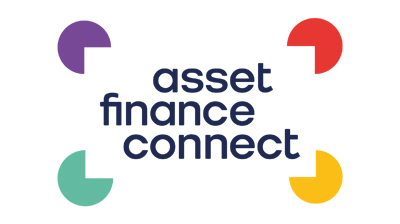Shiona Davies, director at BDRC Continental (pictured above), commented: “The lack of appetite for external finance isn’t based on a concern about securing approval, as most SMEs are confident the bank would say ‘yes’ if they were to approach them for a facility.
“When it comes to applications, the reality is that eight in 10 of those who do apply end the process with a loan or overdraft.”
Initial analysis of the interviews conducted in Q3 2016, since the referendum result was announced, shows little change in how SMEs felt about the health of the economy.
“This ‘business as usual’ stance is particularly true for smaller and domestic SMEs – and while larger SMEs and those who trade internationally currently have more concerns (notably importers) these are not shared by the majority of SMEs” added Davies.
There were few signs during the referendum campaign of increased concern for the future:
• the proportion of SMEs overall rating either the ‘current economic climate’ or ‘political uncertainty and future government policy’ as major barriers to their business did not change during the campaign. In Q2 2016 they were rated as major barriers by 13% and 10% of SMEs respectively. There has also been no significant change in these figures post Brexit;
• between 2015 and Q2 2016 there was an increase in levels of concern amongst the largest SMEs with 50-249 employees from 8% to 14% for the economic climate and 7% to 16% for political uncertainty, so not a majority view. Post Brexit, these figures have continued to increase (for both larger and international SMEs), but only slightly;
• there was some softening of future growth expectations. In 2013, half (49%) of SMEs expected to grow in the coming year, falling to 43% in the first half of 2016. Initial results post Brexit suggest this decline has not continued.
Instead there was a continuation of trends already seen on the SME Finance Monitor of limited demand for finance and almost half of SMEs showing no appetite for finance:
• some 36% of SMEs were using external finance YEQ2 2016 (ranging from 31% of those with 0 employees to 62% of those with 50-249 employees);
• this has been stable over recent quarters, but lower than in previous years (in 2012, 44% were using external finance) due primarily to fewer SMEs using the core forms of finance (loans, overdrafts and credit cards);
• there were signs in late 2015 that the proportion of ‘permanent non-borrowers’ might be starting to decline (43% met the definition in Q4 2015 compared to 48% in Q1 2015) but in 2016 the proportion increased once again and was 47% in Q2 2016. There has been little change in this figure post Brexit;
• the proportion of SMEs that have applied for a new or renewed loan or overdraft facility has fallen from 11% in 2012 to 6% for YEQ2 2016 across all size bands, risk ratings and once the ‘permanent non-borrowers’ have been excluded;
• future appetite for finance has been more stable over time with around 13% of SMEs planning to apply. This was somewhat lower in Q2 2016 (11%) and it has remained at that level post Brexit. The biggest group (76% of SMEs in Q2 2016) remains the ‘future happy non-seekers’ also unchanged post Brexit;
This decline in appetite for finance does not appear to be a confidence issue for most SMEs, rather a preference to use their own resources or accept a slower level of growth that they can self-fund;
• YEQ2 2016, 8 in 10 SMEs (80%) agreed that their plans for the business were based on what they could afford to fund themselves, with limited variation by size of SME;
• in new questions for 2016, 7 in 10 SMEs (71%) agreed that they would accept a slower rate of growth they funded themselves rather than borrow to grow more quickly, while almost half (47%) agreed that they never thought about whether their business should use (more) external finance. Both these views were expressed more strongly by smaller SMEs;
• In H1 2016, half of those planning to apply for bank finance in the next three months (50%), were confident that the bank would say yes. Amongst those with no plans to apply (who expect to be ‘future happy non-seekers’), confidence that the bank would say yes to a hypothetical application was higher at 67%. ‘Future would-be seekers’, who think something will stop them applying, were the least confident of success (44%) which may help explain why they are in this group;
• there has been no change overall in these levels of confidence post Brexit.
Shiona Davies concluded: “The Monitor provides data back to 2011 which allows us to follow trends over time and put current SME sentiment into context. The Q2 report provides further evidence to explain the current lack of appetite for external finance amongst SMEs, and a preference for self-funding rather than any major concerns about being successful if they were to apply. Brexit has the potential to change the business context. For now, most SMEs are reporting ‘business as usual’ albeit there are signs of concern amongst some specific groups. Going forward, the new monthly analysis will provide further insight into any changes in SME sentiment.”








